No.1 and No.2 Canadian Army University Courses
by Bill Alexander ©2014
During the Second World War many innovative programs were devised to train personnel for service in the Canadian armed forces. Among these was a unique partnership between the army and Canadian universities. Perceiving a shortage of officer and technical specialists, the army instituted a program to give selected high school graduates, with high academic standing, an initial year of a university engineering program combined with basic military training. From this group the army would select potential officer candidates, while the others would continue their training in various technical trades. The program ran for two years and was respectively designated No 1 Canadian Army University Course and No 2 Canadian Army University Course.[i]
Initiated in the 1942-1943 school year, the CAUC program was extended into 1943-1944. Basic military training started during the summer months and in the autumn the student-soldiers moved to a university campus for academic instruction, the syllabus consisting of a first year engineering course and some military instruction. With an enrolment of 160 men, No 1 Canadian Army University Course (No1CAUC), the pilot course was held only at the University of Toronto during1942-1943. Reviewed at the end of the school year it received positive evaluations and was deemed a success.
For the next school year, the program was expanded and No 2 Canadian Army University Course (No 2 CAUC) was organized at universities across Canada. Over 1,200 student soldiers were enrolled in serials at the University of British Columbia, University of Alberta, Western University, University of Toronto, Acadia University, McGill University, McMaster University, Queen’s University, University of New Brunswick, and the University of Saskatchewan. At least two more universities participated, but to date they have not been identified. No. 2 CAUC was also deemed a success, but by 1944 a surplus of officer personnel had developed. Having met the army’s needs, the program was suspended at the end of the second session. Most graduates of the program went on to officer training for specific corps, including RCA, RCE, RCCS, and RCEME. They also served in infantry and armoured units overseas. Those not selected as officer candidates continued in technical trades training for various corps. Several officer graduates volunteered for the Canloan officer scheme and served overseas under that program. [ii]
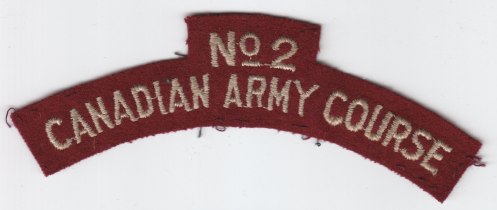
Embroidered No 2 CAUC titles. Chain link stitch oyster on green, silver on maroon. Universities not identified
The student-soldiers enrolled in the Canadian Army University Courses wore battle dress and the drab field service cap. A chrome or rhodium plated general list cap badges of the First World War pattern was worn on the cap. Consistent with NDHQ policy, collar badges were not provided; they were not to be worn on battle dress. [iii]
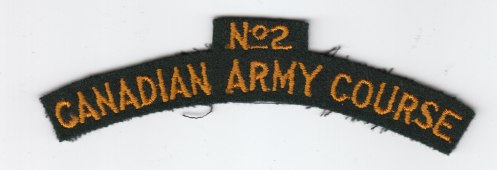
Embroidered No 2 CAUC titles. Top, scarlet embroidery on yellow. University not identified. Bottom title. This pattern, in yellow on dark green has been identified as the generic No 2 course title.
Distinctive shoulder titles were worn by the CAUC contingents, but authorizations have not been located. The shoulder titles bore the number of the course, either “No 1” or “No 2”, over “CANADIAN ARMY COURSE”. No 1 Canadian Army Course is only found in one pattern. Issued to the small enrolment of the program’s first year, the title was flocked (sprayed) in off white lettering on medium blue felt.[iv] No 2 Canadian Army Course titles are found in several patterns and colours, including flocked and embroidered examples. The standard No 2 pattern was yellow/gold embroidery on dark green melton. Other No 2 embroidered examples were made using a chain link stitch, white on medium green, standard red (scarlet) embroidered lettering on yellow melton, with a black embroidered border, oyster (silver) embroidery on maroon, and yellow embroidered lettering on medium blue base. The base materials were either felt or melton. Flocked No2 titles, on felt material are found in off white (officially called “oyster”) on medium blue and on red. The wide range of titles for No 2 CAUC is likely attributable to the course being held at different universities. Their identity and morale would be enhanced by a unique title for each serial.
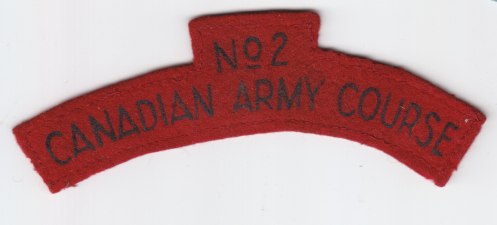
No 2 CAUC yellow embroidered on blue felt, and No 2 CAUC flocked (sprayed) on red felt. Universities not identified
In addition to the numbered course titles, a title exists without a course number, reading CANADIAN ARMY COURSE, in white lettering sprayed on red felt. Its provenance has not been established, but it has been suggested that this pattern was worn by the instructional cadre.

No number, flocked white on scarlet. It has been suggested that this title was worn by the instructional cadre
An unique solution to recruiting and training officers, the CAUC’s legacy was significant. Many of the recruits went on to distinguished careers in the army and in civilian life. Their success was grounded in the CAUC programs.
We welcome you to rate this article by clicking on the stars below
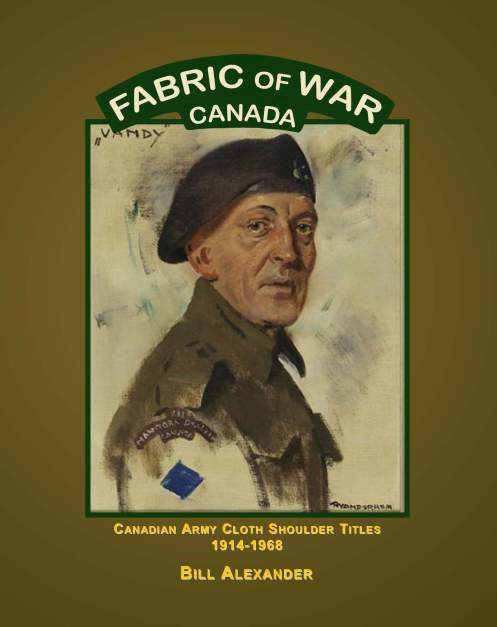
The author is currently researching the use and authorizations of shoulder titles in the Canadian Army. Service Publications looks forward to pubishing this definitive reference in the near future.
[i] Stacey C.P. Six Years of War, Queen’s Printer, Ottawa, 1955. P139.
[iii] Thompson R., Cap Badges of the Canadian Officer Training Corps, Vol. 2, Nova Scotia, Canada. 1972. Pg 56. The plated cap badge may have been used by COTC contingents who did not have a unique pattern.
[iv] Spraying (also called flocking) was a process where the naming or inscription was sprayed or painted using a stencil or screen on the base material. Spraying was usually done on a stable base fabric, usually felt.

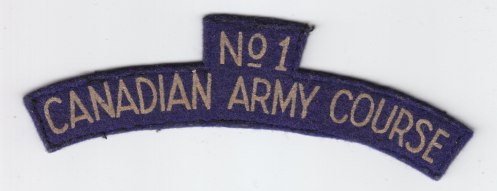
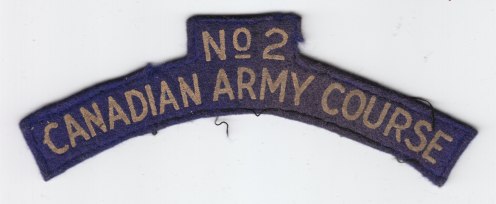
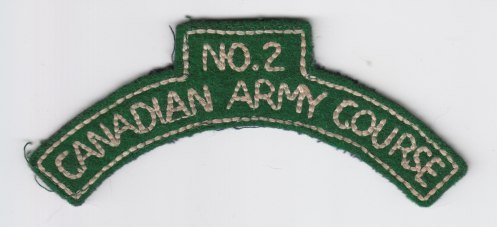
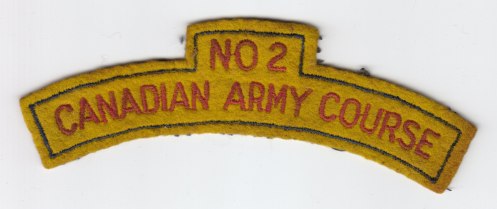
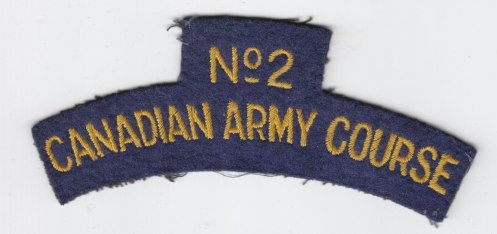
Excellent research on a very little known subject by Bill……I know the book will be of this standard of quality.